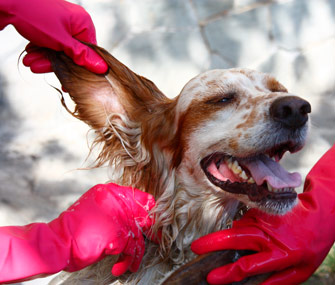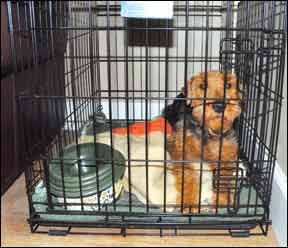 “Successive Approximation”, or “Shaping”, is a highly useful and proven technique to train your Service Dog for any tasks. Well worth reading!
“Successive Approximation”, or “Shaping”, is a highly useful and proven technique to train your Service Dog for any tasks. Well worth reading!
Fun Dog Training Techniques Using Shaping! | Whole Dog Journal
 “Successive Approximation”, or “Shaping”, is a highly useful and proven technique to train your Service Dog for any tasks. Well worth reading!
“Successive Approximation”, or “Shaping”, is a highly useful and proven technique to train your Service Dog for any tasks. Well worth reading!
Fun Dog Training Techniques Using Shaping! | Whole Dog Journal
Pet ownership represents a large emotional – and financial – commitment. Whether you buy from a pet store or a breeder, adopt an animal from a shelter, or take in a stray, initial costs are just the beginning of the story.
This guide for the folks at thesimpledollar.com examines the different costs associated with pet ownership and helps you know what to expect, how to plan for these expenses, and potential ways to reduce the financial burden of pet ownership.
So freaking simple. So amazing. This is how it all works.
Like many great scientific advances, Pavlovian conditioning (aka classical conditioning) was discovered accidentally.
During the 1890s Russian physiologist Ivan Pavlov was looking at salivation in dogs in response to being fed, when he noticed that his dogs would begin to salivate whenever he entered the room, even when he was not bringing them food. At first this was something of a nuisance (not to mention messy!).
Read more at Pavlov’s Dogs | Simply Psychology
Operant Conditioning versus Classical Conditioning. Service Dog Express (SDE) uses both.
Although a basic feature of operant conditioning is reinforcement, classical conditioning relies more on association between stimuli and responses. A second distinction is that much of operant conditioning is based on voluntary behavior, while classical conditioning often involves involuntary reflexive behavior. HOWEVER, although operant conditioning works extremely well, SDE NEVER supports punishment. Withholding praise is NOT the same as punishment. A very important distinction.
Check out more at: Key Differences Between Classical and Operant Conditioning
Next time you’re shopping in the produce aisle of the grocery store, you may want to add some some fruits and veggies for you and your canine to your cart. From carrots and broccoli to apples and cantaloupe, these snacks are low-calorie, yummy and safe to feed your pup as long as they are prepared correctly and given in moderation. I even have a special trick for giving canines bananas without the mess!
Check it out: Video: Best Fruits and Vegetables for Dogs
I highly recommend this book, by the amazing Canine Behaviorist, Patricia McConnell. It chronicles her own path of dealing with trauma, and how working with her dog, Will, also a with a history of trauma, helped turn them both from “victims” to “survivors”. I am sure it is also available on Amazon.
A powerful, soul-searching memoir about the journey Patricia takes together with a troubled puppy to change being “a victim” into being “a survivor.
IT’ SUPERBOWL TIME. If you are a fan of football and like to root for the underdog check out these DOGS. At one time they were underdogs (literally). They were passed over time and time again. But the good folks at In Dog We Trust gave them a chance. With love and care these underdogs are now WINNING, they found homes, they found their callings, they won their Superbowl! Please share and while you are at it tell In Dog We Trust thanks with a Facebook LIKE or a donation. They did and are continuously doing a fantastic job!
 Dr. Marty Becker discusses the things to look for — and smell — to know if your dog’s ears are infected. Plus tips on how to safely clean your dog’s ears.
Dr. Marty Becker discusses the things to look for — and smell — to know if your dog’s ears are infected. Plus tips on how to safely clean your dog’s ears.
Check out: How to Clean Your Dog’s Ears and Keep Them Healthy
 Whole Dog Journal outlines a positive dog training 5-step plan of action when your pup refuses to get in his crate willingly.
Whole Dog Journal outlines a positive dog training 5-step plan of action when your pup refuses to get in his crate willingly.
[Updated September 1, 2016]
Properly used, the crate is a marvelous training and management tool. Improperly used, it can be a disaster. Overcrating, traumatic, or stimulating experiences while crated, improper introduction to the crate, and isolation or separation anxieties are the primary causes of crating disasters. If, for whatever reason, your dog is not a fan of the artificial den you’ve provided for him, and assuming he can’t be trusted home alone uncrated, here are some things you can do:
The last thing you want is to make the crate an aversive environment for your dog.
Every time your crate-hating dog has a bad experience in a crate, it increases his stress and anxiety and makes it harder to modify his crate aversion. Your dog may tolerate an exercise pen, a chain-link kennel set up in your garage, or even a room of his own. A recent Peaceable Paws client whose dog was injuring herself in the crate due to isolation anxiety found her dog did just fine when confined to the bedroom when she had to be left alone.
Many dogs who don’t crate well are delighted to spend the day at the home of a friend, neighbor, or relative who is home when you are not, or at a good doggie daycare facility – assuming your dog does well in the company of other dogs. This is not a good option for dogs with true separation anxiety, as they will be no happier with someone else when they are separated from you than they are in a crate. (See “Relieving a Dog’s Separation Anxiety,” WDJ July 2008.)
Utilize a combination of counter-conditioning (changing his association with the crate from negative to positive) and operant conditioning/shaping (positively reinforcing him for gradually moving closer to, and eventually into, the crate) to convince him to go into his crate voluntarily. Then, very gradually, work your way up to closing the door with your dog inside, and eventually moving longer and longer distances away from your crated dog for longer and longer periods of time. (See “Dog Crating Difficulties,” WDJ May 2005). Note: If your dog has a separation/anxiety issue, you must address and modify that behavior before crate-training will work.
Figure out why the crate is aversive to your dog. If he was crate-trained at one time and then decided he didn’t like it, what changed? Perhaps you were overcrating, and he was forced to soil his den, and that was very stressful for him.
Maybe there are environmental aversives; is it too warm or too cold in his crate? Is there a draft blowing on him? Is it set near something that might expose him to an aversive sound, like the washing machine, buzzer on a clothes dryer, or an alarm of some kind? Perhaps his crate is near the door, and he becomes overstimulated when someone knocks, or rings the doorbell, or when mail and packages are delivered. Is someone threatening him when he’s crated – another dog, perhaps? Or a child who bangs on the top, front, or sides of the crate? Maybe he’s been angrily punished by someone who throws him into the crate and yells at him – or worse. All the remedial crate training in the world won’t help if the aversive thing is still happening. You have to make the bad stuff stop.
If he’s a victim of generalized anxiety or separation anxiety and the crate aversion is part of a larger syndrome, or his stress about crating is extreme, you may want to explore the use of behavior modification drugs with your behavior knowledgeable veterinarian, or a veterinary behaviorist, to help reduce stress enough that he can learn to love his crate. Note – if your vet is not behavior knowledgeable, tell her that many veterinary behaviorists will do free phone consults with other veterinarians.
Of course you can’t take him with you all the time, but whenever you can, it decreases the number of times you have to use another alternative. Some workplaces allow employees to bring their dogs to work with them; you don’t know until you ask. Of course you will never take him somewhere that he’d be left in a car, unattended, for an extended period of time, or at all, if the weather is even close to being dangerous. A surprising number of businesses allow well-behaved dogs to accompany their owners; if it doesn’t say “No Dogs” on the door, give it a try! Your dog will thank you.
Here’s a project beginning at the University of Washington to study the effects of genetics and environment on how long a dog lives. They are looking for thousands of dogs to participate. You can go to http://dogagingproject.com to learn more and see if you can enroll your dog in the study.
Source: Dog Aging Project |